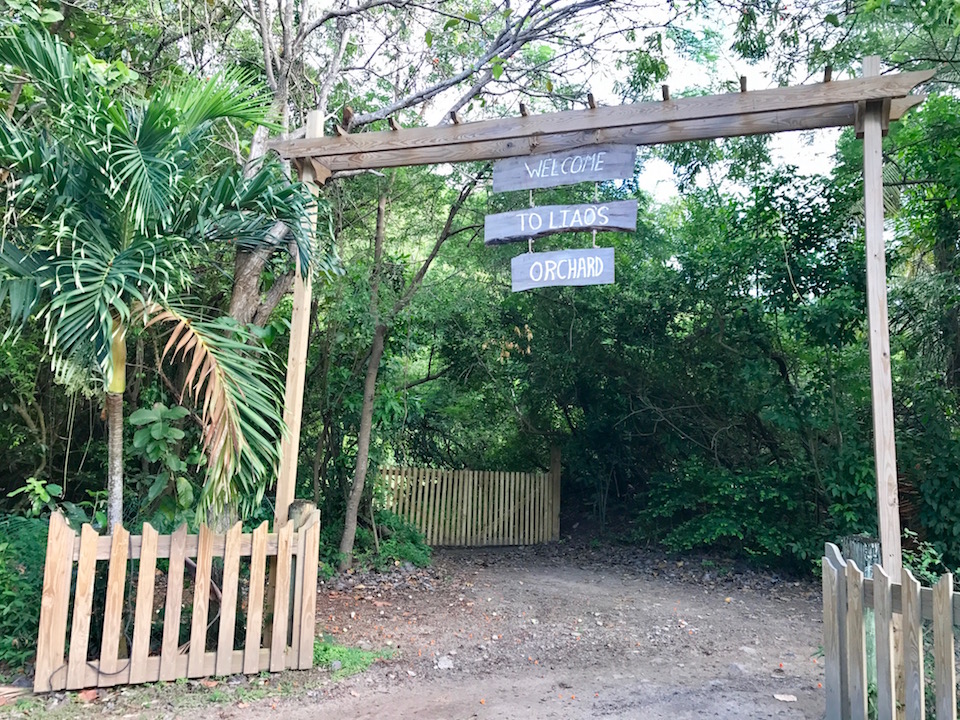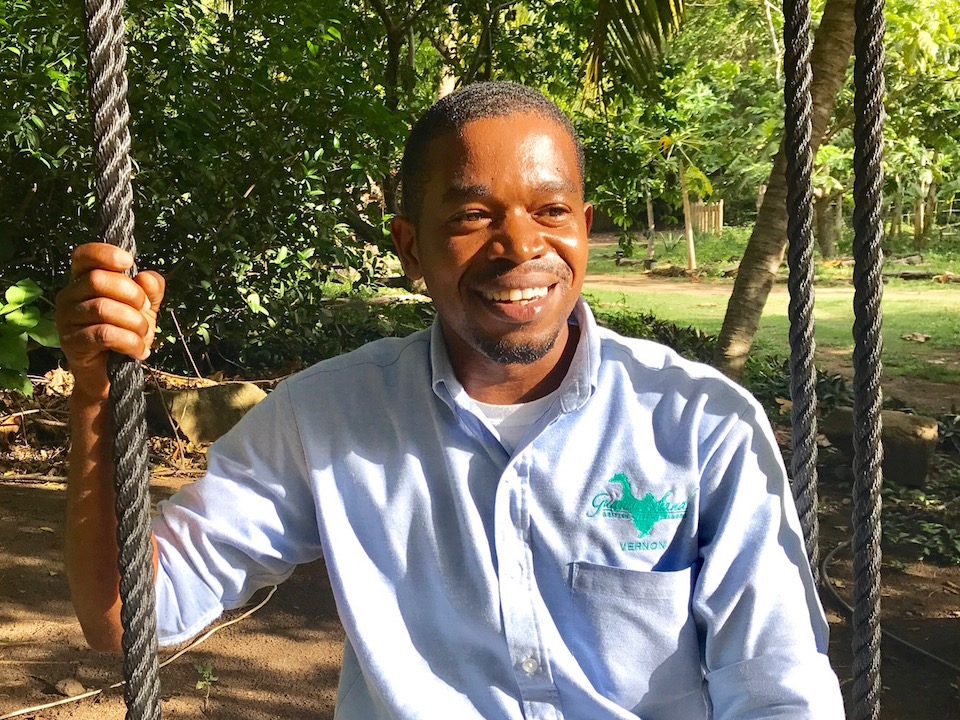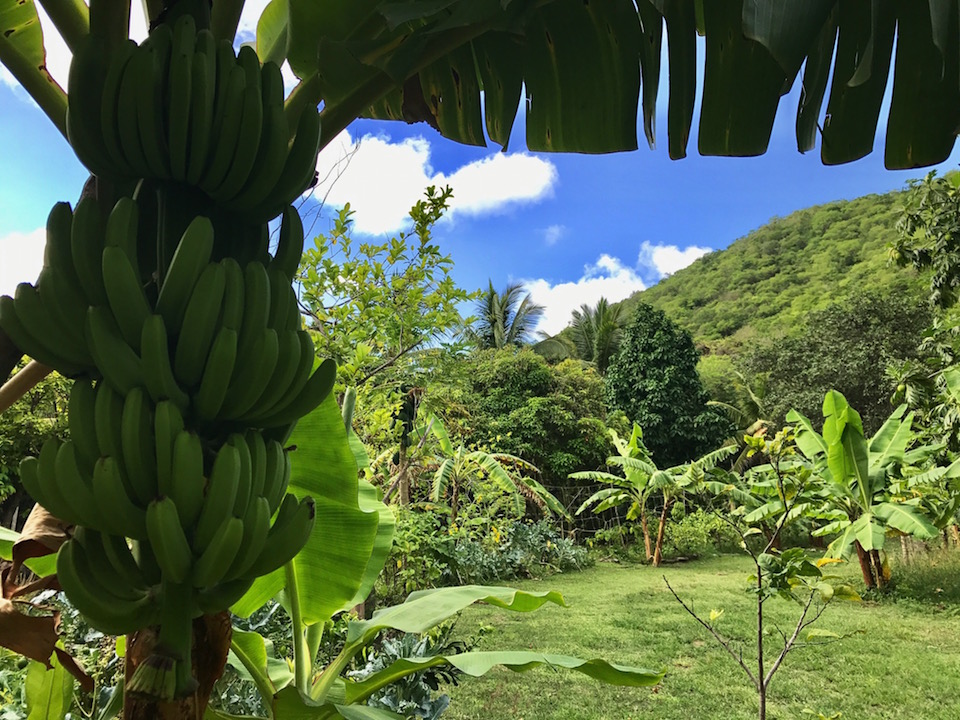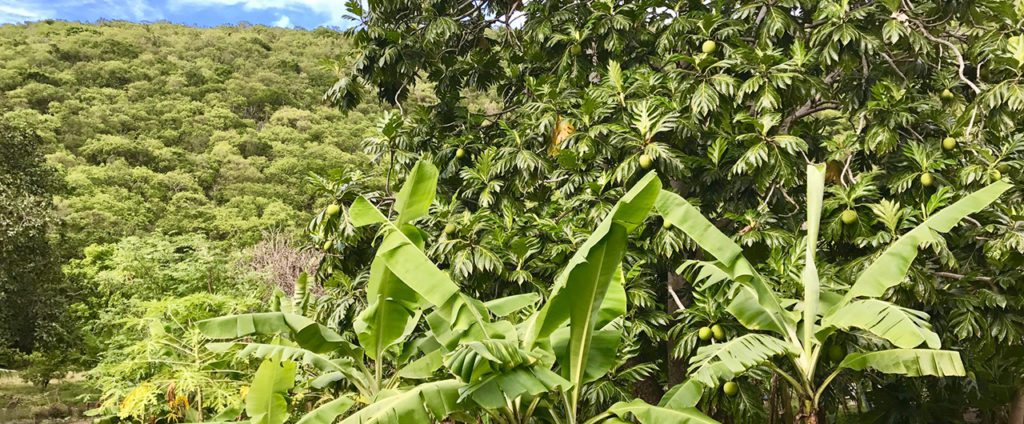By Sarah Greaves-Gabbadon
CJ Travel Editor
These days there’s a whole lot of talk about farm-to-table “this” and slow food “that” in the culinary world, but one Caribbean resort is (literally) putting its fork where it’s food is. And at Guana Island, a private-island resort in the British Virgin Islands, a significant percentage of where that food comes from is its own organic orchard, which occupies three acres (and growing) of the 850-acre oasis.
It all began more than three decades ago when Liao Wing Pei, visiting from China, came to introduce bird species to the island that has since been designated a nature preserve. While resident he cut many of the trails that are now used for hiking; started a program for the endangered native iguanas (now found only on Guana and Virgin Gorda); and began planting the fruit he grew up with.

Fast-forward to today, when a few fruit lychee and longan trees have morphed into an Edenic plot where almost every tropical fruit you can name thrives. Now there are more than 300 banana plants and 25 mango trees. Naseberry, starapple, papaya, passionfruit and guava grow alongside Surinam and Barbados cherries, key limes and coconuts.
“For most people, just seeing the whole raw fruit on the tree is a big deal,” says Guana’s horticulturist and assistant manager Vernon Daniel, a soft-spoken Dominican who’s in charge of the farm and leads guests on complimentary daily orchard tours, which, of course, include generous samplings of its bounty. “So to taste it and enjoy it right here where it is grown is really the icing on the cake.”

Vernon Daniel.
And although it’s officially called Liao’s Orchard, the plot yields much more than fruit. Since adding vegetables two years ago, Guana’s bounty now includes everything from tarragon, eggplant and Swiss chard to edible flowers (grilled baby sunflower seeds, anyone?) and micro-greens.
“Guana’s known for its beaches [there are seven on island] but we want to be known for our food,” says Daniel. Consequently he and Guana’s chef Kael Palancares Mendoza have formed a close bond, working to incorporate what the orchard produces into the daily menu. Together they’re maximizing the use of fruit, herbs and vegetables in Guana’s fare in flavorful and creative ways. The basket at lunch may contain bread made with lime or soursop. Grilled papaya salad is a favorite. And ripe breadfruit, formerly discarded because it was considered inappropriate for roasting and service as a savory starch, may now appear in a smoky breadfruit soup or as a sweet (and surprising) topping for soursop cake.

But the fullest expression of Guana’s commitment to the farm-to-table movement, however, is its torchlit orchard dinners. Every other Thursday, the island’s maximum 40 guests descend from their hillside cottages to the pastoral plain in its center to dine amid the trees while chef cooks the evening’s meal at a fire pit mere feet away.
“Our goal is to have about 40 percent of ingredients for our menus come from the farm,” Daniel says, estimating that it will take about five years. It’s a painstaking and gradual process but he’s in it for the long haul. “I grew up on a farm and come from a family of subsistence farmers. So for me this isn’t a fad, it’s a lifestyle. And it’s one worth sharing.”
